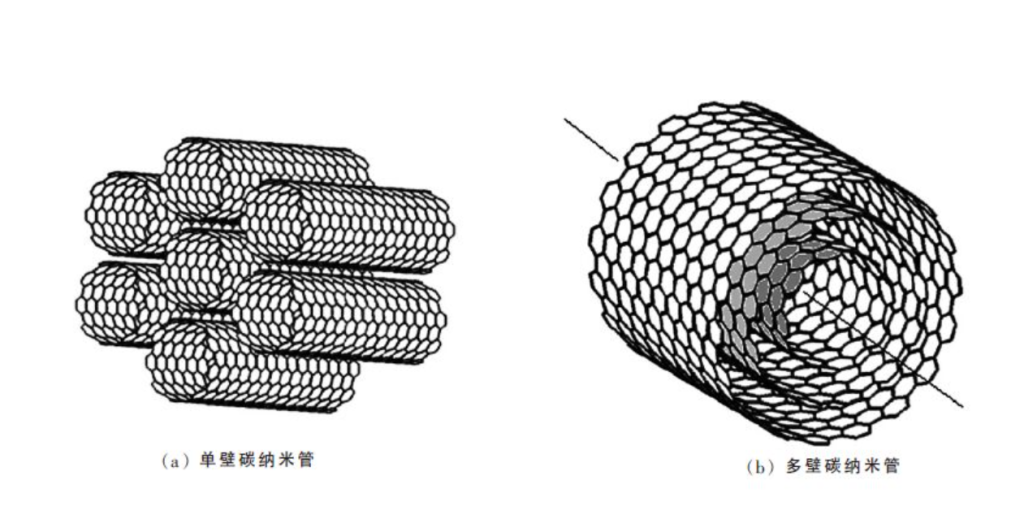Performance of Carbon Nanotubes in Road Longevity and Anti-Aging
Introduction
Road durability is a critical factor in modern infrastructure, directly affecting maintenance costs, safety, and environmental impact. Over time, asphalt pavements deteriorate due to oxidation, moisture, UV radiation, thermal cycles, and mechanical stress. To enhance road longevity and reduce aging effects, researchers have explored various material modifications, with carbon nanotubes (CNTs) emerging as a highly effective solution.

CNTs, due to their exceptional mechanical strength, thermal stability, and chemical resistance, significantly improve the durability of asphalt mixtures. This article explores how CNTs contribute to extending road lifespan and enhancing anti-aging properties.
Factors Affecting Road Aging and Deterioration
Road aging is primarily caused by the following factors:
- Oxidation – Asphalt binder reacts with oxygen, leading to increased stiffness and cracking.
- Thermal Cracking – Repeated temperature fluctuations cause expansion and contraction, weakening the pavement.
- Moisture Damage – Water infiltration reduces adhesion between asphalt and aggregates, leading to stripping and potholes.
- UV Degradation – Prolonged UV exposure accelerates the breakdown of asphalt components.
- Mechanical Stress – Heavy traffic loads and dynamic forces induce fatigue cracking and deformation.
To address these issues, CNT-reinforced asphalt has been proposed as a next-generation solution for high-performance pavements.
Mechanisms of Carbon Nanotube Enhancement in Road Longevity
1. Oxidation Resistance and Anti-Aging Effects
How CNTs Work:
CNTs create a dense, interconnected network within the asphalt matrix, reducing the diffusion of oxygen and other aging agents. Additionally, their high thermal and UV stability prevents rapid asphalt degradation.
Benefits:
✔ Slows down the oxidation process, maintaining flexibility for a longer period.
✔ Enhances resistance to UV-induced degradation, extending road lifespan.
✔ Reduces the formation of microcracks due to aging.
2. Improved Rutting and Deformation Resistance
How CNTs Work:
CNTs reinforce the asphalt binder by enhancing its viscoelastic properties, making it more resistant to permanent deformation under heavy loads.
Benefits:
✔ Increases resistance to rutting and surface deformation.
✔ Enhances load-bearing capacity, reducing the need for frequent repairs.
✔ Improves road performance in high-temperature environments.
3. Moisture and Water Damage Protection
How CNTs Work:
The hydrophobic nature of CNTs helps reduce water infiltration, preserving adhesion between asphalt and aggregates.
Benefits:
✔ Prevents moisture-related damage such as stripping and potholes.
✔ Improves resistance to freeze-thaw cycles in cold climates.
✔ Reduces maintenance costs associated with water-induced failures.
4. Enhanced Thermal Stability and Crack Prevention
How CNTs Work:
CNTs improve the thermal conductivity of asphalt, allowing better heat dissipation and reducing temperature-induced stress.
Benefits:
✔ Minimizes thermal cracking in regions with extreme temperature fluctuations.
✔ Improves resistance to fatigue cracking under repeated loading.
✔ Reduces material expansion and contraction effects.
Comparative Analysis: CNT-Modified Asphalt vs. Conventional Asphalt
| Performance Factor | Conventional Asphalt | CNT-Modified Asphalt |
|---|---|---|
| Oxidation Resistance | Moderate | High |
| Rutting Resistance | Low to Moderate | High |
| Moisture Resistance | Moderate | High |
| Thermal Stability | Moderate | Very High |
| Fatigue Resistance | Low | High |
| Service Life | 10-15 years | 20+ years |
Challenges and Future Directions
Despite the significant benefits of CNT-modified asphalt, certain challenges must be addressed for widespread adoption:
✔ Dispersion Issues – Ensuring uniform distribution of CNTs in asphalt is critical for maximizing performance.
✔ Cost Considerations – High production costs of CNTs may limit large-scale implementation, but advancements in synthesis methods could reduce expenses.
✔ Compatibility with Existing Infrastructure – CNTs must be optimized for use with current road construction technologies.
Future research aims to develop cost-effective CNT composites, hybrid nanomaterial formulations, and self-healing asphalt for next-generation smart roads.
Conclusion
Carbon nanotube-modified asphalt presents a revolutionary approach to enhancing road longevity and reducing aging effects. By improving oxidation resistance, thermal stability, moisture resistance, and mechanical durability, CNTs significantly extend pavement lifespan and reduce maintenance costs. While challenges remain in cost and large-scale implementation, ongoing research and technological advancements continue to push CNT-modified asphalt toward practical application in sustainable and long-lasting road construction.

